Video: Dr McInnes Climate change and the coast: evidence, projections & responses, 2022
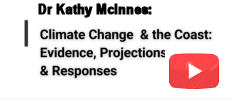 Dr. Kathy McInnes addresses Port Phillip Conservation Council in Victoria, Australia.
Dr. Kathy McInnes addresses Port Phillip Conservation Council in Victoria, Australia.
 Dr. Kathy McInnes addresses Port Phillip Conservation Council in Victoria, Australia.
Dr. Kathy McInnes addresses Port Phillip Conservation Council in Victoria, Australia.
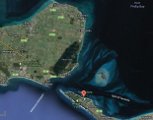

Media reports yesterday that the government has received two 'confidential' reports that link channel deepening to coastal erosion in the south of Port Phillip Bay and the loss of Portsea front beach are no surprise to locals or others who have been watching the changes in the south of the Bay since the channel deepening project ended, Sue Pennicuik, Greens MP for Southern Metropolitan Region said today.
Read more: Beach loss linked to dredging -- Reports say wave surges hit Portsea. by Cameron Houston in the Age of 7 July 2013.
"Why are these reports confidential?" Ms Pennicuik asked. "Information about the state of Port Phillip Bay belongs to the public, not to the Department of Environment and Primary Industries (DEPI) or to the Port of Melbourne," she said.
The Port has refused to release the full range of data it has collected on the changed bathymetry in the Bay since channel deepening.
"I have asked for this information through the parliament and through Freedom of Information (FOI) and have not been given access to the range of meaningful data that would allow the parliament and the public to see just what has happened and is happening in the Bay and how much more water is entering and leaving on each tide.
"The Port has repeatedly denied that the loss of Portsea Beach is the result of channel deepening, when all the signs that people have been observing for nearly four years point to that clearly being the case. Now, one of the confidential studies is confirming that the 'size and velocity of waves reflected towards Portsea front beach appear to have increased.
"The research also found that wave energy had been redistributed along the Mornington Peninsula following the completion of the project, which is also no surprise to those of us who have seen for ourselves the 'larger and more powerful swells at the southern end of the peninsula' over the past four years,” Ms Pennicuik said.
"However, evidence that channel deepening has enabled any larger ships to enter Port Phillip Bay is and always has been opaque and dubious.
"Many scientists warned that allowing significantly larger volumes of water into the Bay though the Heads could lead to just the sort of outcomes we are seeing, but were dismissed and derided at the time.
"What is most galling is that the decision makers who ignored these warnings have escaped any responsibility for the damage done in the south of the Bay, which is likely to be irreversible and ongoing.
"Meanwhile, the DEPI stands by its position that there are no issues from channel deepening in relation to erosion at Portsea.
"This official denial has to end. Port Phillip Bay is public property and an ecological system.
"The government and Port of Melbourne should release all the data and information it has, and continues to collect, on the changes to the Bay," Ms Pennicuik concluded.
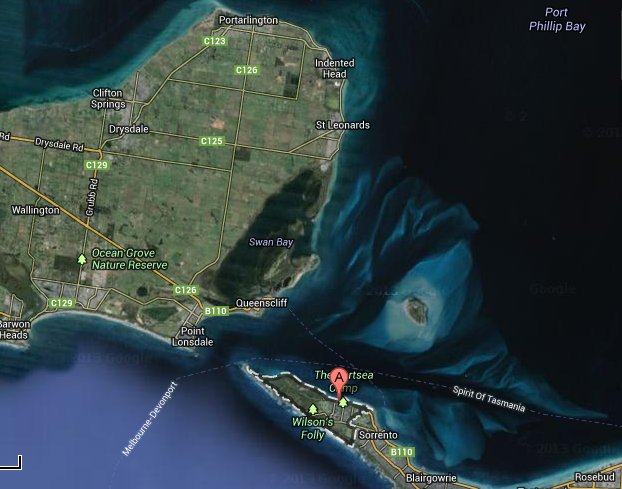
For further comment: Sue Pennicuik --03 9530 8399
 "The growth lobbyists will tell us that we can solve our problems by converting to “clean coal” technologies or nuclear power, building more high rise, producing desalinated water at $10 litre (who knows?), installing “smart” electricity meters, piping water from the Northern Victoria to Melbourne, importing more food on more and bigger ships etc." Federal Candidate, Jenny Warfe writes, "I'm looking forward to a different way of 'moving forward.'"
"The growth lobbyists will tell us that we can solve our problems by converting to “clean coal” technologies or nuclear power, building more high rise, producing desalinated water at $10 litre (who knows?), installing “smart” electricity meters, piping water from the Northern Victoria to Melbourne, importing more food on more and bigger ships etc." Federal Candidate, Jenny Warfe writes, "I'm looking forward to a different way of 'moving forward.'"
Editor: Headings introduced by candobetter.org editor
Firstly, I believe we must honour in word and deed our international obligations to provide asylum (1) for those who seek it, especially in view of our present international military activities. What’s more, the few thousand refugees who gain Australian residency each year make no significant difference to our population growth, so are irrelevant to the following discussion.
Dick Smith’s recent ‘Population Puzzle’ (2) documentary has brought population impacts into the mainstream so now seems like a good time to discuss one of my policies:
*
Develop a population plan informed by best available relevant science. Migration program should focus on political and climate asylum and reunions. Remove reliance on skilled migration by re-skilling and training Australians.
As Dick Smith discovered to his amazement – there is no plan and neither major party seems capable of understanding the mathematical realities of growth.
Population growth in most developed countries is declining, but Australia’s growth rate has been rising fast. It’s currently 2% per annum - more than twice the world average and higher than most other developed or developing nation, eg: India’s 1.4% and UK’s 0.4%. At 2% per annum, Australia will almost double its population by 2050. Melbourne is set to double to 8 million in the next 50 years (3). Impacts of our growth rate are being felt in inadequate public transport services whilst tollways and freeways continue to expand; water restrictions; stresses on our coastline, oceans and waterways; loss of productive land to new suburbs; loss of marine and terrestrial biodiversity; destruction of our natural and built heritage for continuing urban expansion – and the accompanying carbon emissions and climate change. Surely the elephant in the room is the world’s inability to deal wisely with our own expansion?
Where's the logical end point to this?
I think every nation on Earth needs a plan based around some concept of carrying capacity. This might be a long way off, but a good start would be to restructure the UN as a real global government, extinguish domination by the USA and its allies, all countries to be represented equally and global defence and armaments expenditure to be significantly re-allocated to humanitarian and environmental restoration activities.
In 1994 Australia did look at its carrying capacity in the Parliamentary report: Australia's population "carrying capacity”: one nation - two ecologies (4). But – the idea has gone nowhere since - buried it seems under the rise to power of the growth lobby, including the Business and Property Council of Australia – the few faceless entities who benefit from more of everything, and ably assisted by media commentators such as Andrew Bolt and Piers Akerman. The growth lobbyists will tell us that we can solve our problems by converting to “clean coal” technologies or nuclear power, building more high rise, producing desalinated water at $10 litre (who knows?), installing “smart” electricity meters, piping water from the Northern Victoria to Melbourne, importing more food on more and bigger ships etc.
Mr. Rudd was right. Responding to climate change is one of the greatest moral challenges of our time, but dealing with that challenge whilst we continue to expand will be all the harder. Until our political leadership has the guts to ignore the ramblings of Andrew Bolt et al we will be stuck in a reactive policy merry-go-round. As our natural heritage disappears it isn’t good enough to fall back on a “19th Century zoo mentality” and list yet another species as critically endangered (what’s the point if we pave over its habitat?) or propose a National Park to save a piece of our land or sea, when what we need to do for the safety of the planet and all who live on it is to reduce the impact we humans are having on the land and oceans.
It’s my view that since the industrial revolution humans have become the only species on Earth whose population numbers, at least in the “First World” are no longer prescribed by the environmental constraints that controlled us for thousands of years and other species for millions of years. Now, especially in the West we have become increasingly disconnected – both physically and psychologically – from the environment which sustains us, allowing us to consider the environment as a resource for our use and exploitation rather than our habitat. But the standards we have constructed in the West and our addiction to growth and its underpinning consumerism have come at huge cost to others on the planet. Poorer nations subsidise our wealth, providing consumer goods made with cheap labour in harsh conditions, and many such country’s lax regulations allow their environments to become degraded and their endemic species to be obliterated.
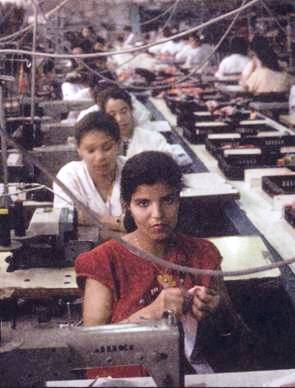
But, there is another way to organise ourselves. As even capitalism loving Dick Smith says, “capitalism can work wonderfully well without growth”.
We can get along very well in a steady state economy – indeed our quality of life, not just the quality of our possessions – might even increase. There’s quite a bit written about it, and it’s all pretty inspiring. See: http://steadystate.org/
I reckon if we don’t want to consider our population and growth impacts we aren’t being humane. Already, with 6.5 Billion people on the planet, over 1 billion can’t access clean water. With 9 billion people by 2050 how can we possibly address appalling realities like that? Sometime soon we are going to have to pay the ferryman.
I’m looking forward to a different way of “moving forward”.
(1) And on-shore processing centres
(2) http://www.abc.net.au/tv/populationpuzzle/
(3) The Age August 5th 2010 http://www.theage.com.au/victoria/make-plans-for-population-to-double-within-50-years-20100804-11fn5.html
(4) Australia. Parliament. House of Representatives. Standing Committee for Long Term Strategies
Click on first picture to see film of "Frankston Storm-tide surge and Channel Deepening - seaviews"
Click on second picture to see film of "Storm tide views of CBD and Houses on Kananook Creek, Frankston"
The films made by Sheila Newman and including still-footage by James Sinnamon, show very high water at a time when the tides themselves were not at their highest, but rain was heavy and run-off had increased in storm conditions. This means that a very high tide could be devastating under similar rain and storm conditions.
Sue Pennicuik (Greens, Victoria) says that analysis of tidal data supports residents' reports of higher Bay tides since channel deepening. But even without higher tides overpopulation has made old conditions more dangerous. Films made by Sheila Newman and including still-footage by James Sinnamon, show very high water in a creek at a time when the tides themselves were not at their highest. What caused the very high levels in the mouth of Kananook Creek, Frankston, were increased volumes of run-off from increased hard surfaces associated with more buildings to accommodate population growth in Frankston, plus the very heavy, tropical style rain on top of the storm-tide. This means that, even without sea-level rise, a king tide could be devastating if it occurs during a similar short period of high rain and wind. Note that the deepening of the channel from the ocean to Port Phillip Bay was done to accommodate much bigger ships justified by projections of greater volumes of trade associated with the bigger populations in Australia as encouraged undemocratically by her state and Federal governments.
ABC TV Stateline 7.30 PM this evening (2 July 10) also has a story on the evidence of higher tides since channel deepening.
"There have been growing reports of higher tides, beach erosion, faster currents and an increase in swell (surge from Bass Strait) since the Entrance to Port Phillip Bay was deepened,” Greens MP, Sue Pennicuik said today.
The Office of Environmental Monitor (OEM) is reported* as saying that there is no evidence to suggest that dredging is to blame for erosion at Portsea beach; and that the most likely explanation was natural erosion caused by the local impact of storms and seasonally high tides, exacerbated by the swell rolling in from Bass Strait.
“Tidal data that I have obtained from the Port of Melbourne Corporation and have had analysed, supports what so many residents, swimmers, divers and other businesses in the southern part of part Phillip Bay have been reporting since channel deepening: that tides are higher in the south of the Bay” said Greens MP, Sue Pennicuik today.
“Preliminary analysis of wind data from the past ten years suggests that wind beach erosion, particularly at Portsea was not caused by seasonal weather events alone,” she said.
"I am very worried about the tidal changes that are being seen at many places around the south of Port Phillip Bay," said Ms Pennicuik. "It is one of the most serious effects of the channel deepening project that the government was clearly warned about at the time.”
“The preliminary analysis that I am releasing today strongly suggests that the average daily high tides have increased significantly at four points in the south of the Bay, by much more than was predicted by the Port of Melbourne on the basis of ‘expert advice’ in the Channel Deepening Project (CDP) Supplementary Environmental Effects Study.** However, more data is needed about tides, swells, currents and weather events to be able to know for certain what is happening in the south of the Bay, Ms Pennicuik said.“
"Unfortunately, the five metres of sea bed and rock can't be put back at the Entrance and Port Phillip Bay may be permanently damaged as a result of the expensive channel deepening project that we didn't need,” she said.
(From a media release from Sue Pennicuik, 2 July 2010)
The storm-tide associated with the flooding recorded in the films on 26 April 2009 above did not occur during a king tide. If the conditions had been similar and it had been a king tide, the damage and danger would be much greater. In the past few weeks there have been higher tides than in April 2009, but the amount of rainfall coinciding was not as great as in April 2009. Residents have the impression, however that Kananook Creek is running faster since the channel deepening in Port Phillip Bay. If this is true then erosion will be greater on the banks and the land where houses on Long Beach are situated.
The state government (under Kennett, Bracks and Brumby) have made policies to increase development and population in Frankston over objections from many residents. The associated development has increased the hard surfaces (in the form of built surfaces like roofs, roads, gutters, pavements etc) and decreased the big tree coverage. Blocks have been moonscaped and smaller trees have been substituted for the old ones removed.
This decreased vegetation mass has the effect of decreasing the absorption and transpiration once provided by tree cover, which kept water tables down and absorbed a lot of running water. Now, when there is a lot of rain, more runs down into the bay via the hard surfaces and drains and it runs faster. During the storm tide in April 2009 Kananook Creek was flooded by water from drains and surrounding hard surfaces as well as by the incoming tide which was driven by high storm-winds. On this particular day the low pressure system was 997.7, the maximum wind gust was 93, the high tide was .92 cm and the rainfall was 30mm.
If this flooding from the hills had met with a king tide what would have happened to the houses, businesses and residents along Kananook Creek?
The Council will have to redo their planning scheme where the Land Subject to Inundation Overlays did not correlate with the land contours and did not accommodate the changes that were brought on by overpopulation and overdevelopment in the April 2009 situation.
On August 25, 2009, most of the conditions were very similar to those on 26 April 2009. The low pressure system was 999.4, the maximum wind gust was 96, the high tide was .93 cm, but rainfall was only 8.4 mm. The creek did not flood, but this storm-surge still inundated the pier forecourt.
What will happen to Seaford, the next suburb, which is much lower than Frankston, if these trends continue?
Melbourne Water also seems to have been taken by surprise and to have used old data for Frankston Beach in the design of new infrastructure because new data was not available due to the removal of a Bureau of Meteorology weather station at the end of Frankston Pier.
Frankston has the longest reach of westerly winds in the bay and the storm surges rely on prevailing westerlies. For instance, when tide levels are .389mm in St kilda, they may be .730mm in Seaford. In Frankston, they would be higher again. The removal of the weather station makes information for Frankston elusive, just at a time when it is crucial.
All this indicates that the state of organisation and technology and planning in Victoria is not of a sufficiently high standard to predict or deal with the impacts of accelerated and additional development and population growth. The government departments are not competent for the demands they have been generating. The promotion and engineering of population growth and development was done against public opinion. This makes any impact, particularly any damage to person or property, all the worse, since it would have been avoidable if the governments had listened to the public.
Bigger pipes were put in under the McCoomb reserve, on the bend of the creek near the mouth, adding to the inflow rate and volume. These pipes should probably go out into the bay. It has been suggested by a resident that all big buildings should have retention pits. Others have called for no more building permits to be granted and for massive replanting of trees above the flood-level.
The Future Coasts site finds the likelihood of tropical style rains to be increased, with more storms in this area. Storm surges can virtually double height of water over the highest tide. Sea level rise on its own may not be the worst problem in the future; it will be more storm surges.
* The Age, 5/5/10, "Life’s not so swell at Portsea."
** SEES Appendix 45 Cardno Lawson & Treloar, 2007b.
Storm data from http://www.melbournewater.com.au/content/rivers_and_creeks/rainfall_and_river_level_data/rainfall_and_river_level_data.asp
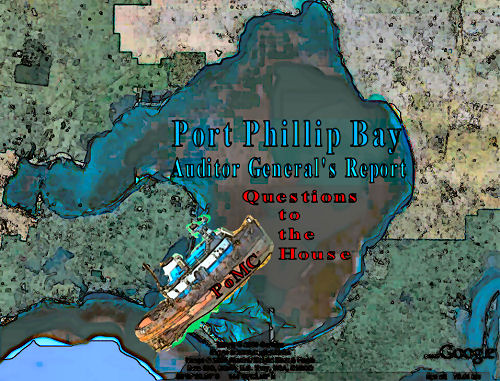
Ms Pennicuik, Greens member of Victorian Parliament, has drawn attention to discrepancies between figures apparently given the Auditor-General by the Port of Melbourne Corporation and figures obtained from them by the Supplementary EES statement process and the hearings and the Standing Committee on Finance and Public Administration.
If it is true that 96% of ships were able to use the Port of Melbourne with no problems, does this discrepancy mean that the Auditor General will have to review his report and the validity of the PoMC's business case, quality of information and practice?
Dredging has cost Victorians enormously already financially, socially and environmentally. Confidence is not high in the PoMC. It is to be hoped that Ms Pennicuick will follow this matter up urgently. Any member of the public wishing to find out more could put questions to Ms Pennicuik to ask in Parliament.
Ms Pennicuick (Greens) (Southern Metropolitan)
"I am speaking today on the Auditor-General's report on the channel-deepening project. This project has been the subject of much public interest since it was first announced in 2002. That interest continues as, unfortunately, dredging is under way. It is a mega-project with a scale of dredging way above anything seen before in Port Phillip Bay -- or pretty well anywhere else in the world. "
"I have read through the Auditor-General's report on the channel-deepening project (CDP), and he concludes that after a very poor start the Port of Melbourne Corporation had developed an effective channel-deepening project. On page 2 of his report he says that the CDP included: "
" a robust business case, complying with better practice guidelines and providing government with the type and quality of information it needed to endorse the project "
" an environmental management plan that addressed the requirements of the environmental assessment process and was endorsed by ministers under the state and commonwealth environmental legislation "
" contracting arrangements, where the corporation followed sound processes in determining how works should be procured and the contractual terms. "
"The Auditor-General concluded that all of these were in order. "
"I am pleased that the Victorian Auditor-General's Office chose to audit the channel-deepening project, because due to public and community concern about the scale and risks of the project it certainly needed independent analysis, which has been sadly lacking hitherto. This report is a valuable contribution to the ongoing debate about the pros and cons of channel deepening, which, it must be remembered, is still happening. It is not a finished project, a point the Auditor-General himself acknowledges. It is still continuing, and he has not in fact audited a completed project. "
"The Auditor-General's report is, perhaps, unable to answer some of the fundamental questions about channel deepening. The first question is: is it, was it or will it ever be needed? The second question is: will it provide any benefits to either exporters or importers or to the people of Victoria? These questions cannot be and are not answered by this report. "
"The fundamental question regarding the channel-deepening project has always been the need for it and the extent to which ships are actually depth constrained in the port of Melbourne. "

"Over the last few years the Port of Melbourne Corporation has quoted figures ranging from 25 per cent to 38 per cent of ships being unable to enter the bay fully loaded, but during the supplementary environment effects statement process and the hearings, and in the Report on Port Phillip Bay: Channel Deepening by the Standing Committee on Finance and Public Administration released last September, the port admitted that the true figure is around 4 per cent of ships that cannot come into the bay or leave it fully loaded. That means 96 per cent of ships are able to come in and out of the bay fully loaded. "
"The Auditor General's report states that 50 per cent of ships are unable to come into the bay fully loaded. I asked the Auditor-General at his briefing yesterday where he obtained that figure from; he replied that he had obtained it from the port. Elsewhere in this report it states -- in fact, it recommends -- that the Port of Melbourne Corporation start to collect figures on this. "
"In fact it does not collect data on what ships are able to come in and out of the bay and are depth constrained. That was an assertion by the port, and it is unfortunate that that figure was used in this report. "
"The Auditor-General then went on to say that in order to measure the benefits the port should start collecting figures on what ships it feels has made use of the benefits of the project. "
"The other benefits of the project, as they were raised in the briefing, are to be measured by reduced costs to exporters and importers. Certainly information that has come to us is that costs to exporters are rising, because they are paying a $60 channel-deepening levy, whether they need it or not. Many exporters have said throughout the lead-up to this project that they did not need or want the project, and they did not want to be paying for it. They are now paying for it. "
"It will be interesting to see whether, through the life of the project, that measure -- the reduced costs to exporters and importers, when they are in fact rising -- ever comes to be seen. "
Recent comments